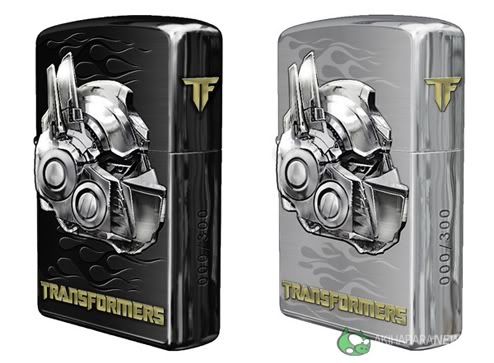
Zippo lighters have retained their retro cool even as the tiny northwestern Pennsylvania company that makes themzippo clothing line gets ready to celebrate its 80th anniversary and 500 millionth lighter next year.
But with pressure increasing on folks not to smoke, Zippo Manufacturing Co. is hoping to capitalize on its brand by offering a wider variety of products — from watches to leisure clothing to cologne — through kiosks and Zippo-brand specialty stores designed to showcase the durable image reinforced by each distinctive lid “click” of its brass-encased, lifetime-guaranteed lighters.
Realizing that producing 18 million lighters a year in the mid-1990s was probably the company’s high-water mark — Zippo’s 550 employees will produce about 12 million lighters this year — the company started marketing research before president and chief executive officer Gregory Booth was hired 10 years ago.
The surveys asked consumers the question Booth must answer today: “What kind of products could we sell other than cigarette lighters that people would accept as Zippo products?”
The research shows the company — tucked into a valley above the Allegheny National Forest, some 130 miles northeast of Pittsburgh — could sell other products — if they fit Zippo’s image, which Booth describes as “rugged, durable, made in America, iconic.”
“It has to be something that feels like Zippo,” Booth said of the travel bags, backpacks, watches, sunglasses, jeans and leisure shirts, wallets, pens, liquor flasks, outdoor hand warmers, playing cards and even a fragrance. Manufactured by Italian perfumer Mavive, it comes in a lighter-shaped canister (and, yes, a lid that clicks).
Marketing experts said all that makes sense provided that Zippo’s new products stay true to the brand — and that the company learns quickly that selling jeans, or any other product, comes with a whole menu of unique business complexities.
“A brand is just a story attached to a product. Like any narrative, it carries sensation. Zippo’s story is ‘manly independence,’” said James Twitchell, a marketing expert whose book “Lead Us Into Temptation: The Triumph of American Materialism” argues that Americans have increasingly turned to brand names, instead of religion, for their identity.
“As long as this narrative is in place it can be attached to any other product as long as the product doesn’t contradict the story line,” Twitchell said, noting Eddie Bauer-branded sport-utility vehicles nonetheless stay true to the sportswear company’s image of “wanderlust.”
Another branding consultant who founded the self-named PaulJLucas.com in Washington, D.C., said Zippo’s plans remind him of the success that Victorinox Swiss Army Brands Inc. has had selling watches, luggage, clothing and fragrances.
“It’s all high-quality, and they did it right, and I buy their stuff,” said Lucas, noting that Swiss Army luggage is as rugged as its trademarked multi-purpose knives.
But not any brand — even American icons — can be used to sell just anything.
“Harley-Davidson once, believe it or not, tried to sell bottled water, and it just tanked,” Lucas said.
His advice is to stick to products closer to a brand’s core. That’s why he likes Zippo’s still-on-the-drawing board plans for patio gas grills but isn’t so crazy about the idea of Zippo cologne — noting that lighter fluid is the only other liquid odor associated with Zippo.
Booth insists Zippo’s plans are built on solid market research and, perhaps as important, fueled by necessity.
“We recognize there’s a lot of pressure on smoking and it’s only gotten worse in the last 10 years,” Booth said, even though Zippo aggressively markets its lighters to collectors, aficionados and even non-smokers, with more than a dozen models in hundreds of colors and unique designs. Although the lighters are generally plated with nickel chrome, some lighters are even covered with gold or platinum.
But Booth believes those varieties can only take the company so far.
“We knew we were invested in an industry that was under pressure and knew we could go the way of the Hula Hoop and not do anything about it,” Booth said.
Instead, Zippo hired David Warfel as its director of global marketing three years ago, to capitalize on his branding experience with Xerox, Kodak and Ray-Ban.
Zippo already sells its lighters in more than 160 countries — but it does so through wholesalers and other distributors. Warfel was hired to take control of the Zippo “brand” and expand it, at first overseas and then gradually in the United States.
The newest wing of the company’s headquarters is a showcase for Zippo’s plans. It features a Zippo kiosk and what’s known as a “shop-in-shop” — a tiny Zippo store meant to take up residence inside a larger department store — and a prototype Zippo specialty store, which the company plans to put in overseas shopping districts.
All three retail spaces feature custom-designed black-framed, glass showcases that “fit together like Legos” so retailers can create their own “Zippo area” in just about any size space, Warfel said.
Zippo will push its expanded product line overseas, at first, because foreign consumers are familiar with the brand’s durable image without it being “almost umbilically tied to cigarette lighters,” Booth said. U.S. consumers “are so tied to Zippo lighters that it’s tough for the customer to make the jump to these other products.”
Although there are plans for a Zippo kiosk at Kennedy International Airport in New York City by the end of April, most Zippo outlets will first arrive in China, other parts of Asia, or western Europe. It doesn’t hurt that Asia remains a key smoking market, with China consuming one-third of the world’s smoking tobacco, something Booth calls a “monstrous opportunity” to grow Zippo.
In 18 months or so, Zippo hopes to open more stateside retail outlets, in places like Las Vegas and Niagara.
No comments:
Post a Comment